Simple Self-Defense Training Tips to Boost Your Confidence
This article provides practical self-defense training tips that can enhance your confidence and personal safety. Learn essential techniques and mental strategies to empower yourself in various situations.
Before diving into techniques, it's crucial to grasp the fundamental principles of self-defense. Understanding the legal aspects of self-defense is key; laws can vary significantly depending on where you live. Knowing what constitutes a justifiable response can save you from legal troubles later. Personal boundaries are equally important—being aware of your limits and the space of others can help prevent confrontations before they start. Furthermore, the importance of awareness cannot be overstated. Like a hawk surveying its surroundings, you need to keep your eyes peeled for any potential threats. Your awareness can be the difference between a safe escape and a dangerous encounter.
Starting with basic self-defense moves is vital for building confidence. Here, we outline simple yet effective techniques that anyone can learn and practice to protect themselves in an emergency. Think of these moves as your safety net; they are not just about fighting back but about creating opportunities to escape. Remember, the goal is to get away from danger, not to engage in a prolonged confrontation.
Your stance and movement are the foundation of self-defense. Maintaining a balanced posture can make all the difference when it comes to evading attacks. Imagine yourself as a tree; rooted yet flexible, able to sway with the wind without breaking. This section explains how to keep your feet shoulder-width apart, knees slightly bent, and weight evenly distributed. This posture allows you to move quickly and efficiently, whether you need to dodge an attack or launch a counter-move.
Practicing footwork drills can significantly improve your agility and response time. Think of footwork as the dance of self-defense; the better your moves, the more fluid your response. We provide a few exercises to help you develop quick and effective movements during a confrontation. For example, practice lateral shuffles or forward-backward steps to enhance your mobility. The more you train your feet, the more instinctive your reactions will become.
Understanding body positioning can help you maintain control in a self-defense situation. Picture yourself as a coiled spring; the right positioning allows you to explode into action when needed. This section discusses how to position your body for maximum effectiveness and safety. Keep your hands up to protect your face, and angle your body slightly to the side to present a smaller target. This way, you're not only protecting yourself but also ready to move at a moment's notice.
Striking techniques are crucial for self-defense. We will introduce simple strikes that can help you defend yourself and create an opportunity to escape. Think of your strikes as your voice; they convey your intention to deter an attacker. Techniques such as palm strikes, elbow strikes, and knee strikes are effective and easy to learn. These moves can create the necessary space for you to flee, which is always the ultimate goal in a dangerous situation.
Situational awareness is key to preventing dangerous situations. It's like having a sixth sense; the more attuned you are to your environment, the better prepared you'll be. This section emphasizes the importance of being aware of your surroundings and recognizing potential threats before they escalate. Regularly scan your environment, identify exits, and note any unusual behavior. This proactive approach can often deter potential threats before they even materialize.
Learning to identify red flags can help you avoid confrontations. This part discusses common warning signs to be aware of in various environments. For instance, if someone is following you too closely or if a group of individuals is behaving aggressively, these are clear indicators to remain vigilant. Trust your instincts; if something feels off, it probably is.
Your instincts can be your best defense. This section highlights the importance of listening to your gut feelings when assessing a situation. Just like a well-tuned instrument, your intuition can alert you to danger. Don't dismiss that uneasy feeling; instead, take it seriously and act accordingly. Whether it means changing your route or seeking help, your instincts are there to guide you.
Mental resilience is as important as physical skills in self-defense. This section explores techniques to boost your confidence and mental toughness in high-pressure situations. Imagine standing tall like a fortress; your mental strength will serve as your shield against fear and uncertainty. Techniques such as positive affirmations and mindfulness can help you cultivate a strong mindset. Remember, the more mentally prepared you are, the more confidently you'll respond when faced with a challenge.
Visualization techniques can enhance your self-defense preparedness. This part explains how to mentally rehearse scenarios to improve your confidence and response. Picture yourself successfully navigating a confrontation; this mental practice can make a world of difference when the real situation arises. The brain often doesn't distinguish between real and imagined experiences, so visualize your success to boost your confidence.
Managing stress is vital for effective self-defense. We discuss various strategies to help you stay calm and focused during confrontations. Techniques such as deep breathing, meditation, and even physical exercise can help you maintain your composure. Think of stress management as your mental training; just like physical drills, it prepares you for the unexpected.
Choosing the right self-defense training program can make a significant difference. This section provides guidance on what to look for in a program and how to find qualified instructors. It's essential to find a program that resonates with you, whether it’s martial arts, Krav Maga, or other self-defense systems. Each discipline offers unique benefits, so choose one that aligns with your goals.
There are various types of self-defense classes available. This part outlines the differences between martial arts, Krav Maga, and other self-defense systems to help you choose the best fit. Each style has its strengths; for instance, martial arts often emphasize discipline and technique, while Krav Maga focuses on real-world scenarios.
Instructor credentials can impact the quality of your training. Here, we discuss how to assess the qualifications and experience of potential instructors to ensure effective learning. Look for instructors with relevant certifications and experience in self-defense. A good instructor will not only teach you techniques but also instill confidence and a sense of safety.
- What is the best self-defense technique for beginners? Basic strikes and footwork are excellent starting points.
- How can I improve my situational awareness? Regularly scan your environment and trust your instincts.
- Do I need to be physically fit to learn self-defense? No, self-defense can be adapted to any fitness level.
- How often should I practice self-defense techniques? Consistent practice, even just a few times a week, can greatly improve your skills.

Understanding the Basics of Self-Defense
This article provides practical self-defense training tips that can enhance your confidence and personal safety. Learn essential techniques and mental strategies to empower yourself in various situations.
Before diving into techniques, it's crucial to grasp the fundamental principles of self-defense. Understanding self-defense isn't just about knowing how to throw a punch or escape a hold; it's about awareness, boundaries, and the legal implications of your actions. Self-defense is a right, but it comes with responsibilities. Knowing when and how to use your skills is essential.
First and foremost, let's talk about awareness. Being aware of your surroundings can make all the difference. Think of it like being a hawk—always scanning the area for potential threats. This doesn't mean you should walk around paranoid, but rather, you should cultivate a mindset that allows you to notice unusual behavior or situations that could escalate. For instance, if you find yourself in a dimly lit area and notice someone following you, your instincts should kick in, prompting you to take action.
Next, let’s discuss personal boundaries. Everyone has a comfort zone, and it's essential to recognize when someone is invading yours. Setting clear boundaries can deter potential aggressors. If someone is too close for comfort, don't hesitate to express your discomfort verbally or physically. This assertiveness can often diffuse a situation before it escalates. Remember, your voice is a powerful tool—use it!
Now, let’s touch on the legal aspects of self-defense. It's vital to understand that self-defense laws vary by location. Generally, the use of force is justified only when you believe you are in imminent danger. However, excessive force can lead to legal repercussions. Therefore, it's crucial to know the laws in your area regarding self-defense. Familiarize yourself with terms like "proportional response" and "duty to retreat." This knowledge will empower you to make informed decisions in critical moments.
To summarize the basics of self-defense, keep these key points in mind:
- Awareness: Stay alert and aware of your surroundings.
- Personal Boundaries: Set and communicate your boundaries clearly.
- Legal Knowledge: Understand the laws governing self-defense in your area.
By grasping these fundamental principles, you lay a solid foundation for your self-defense training. The more you know about your rights and responsibilities, the more confident you will feel in your ability to protect yourself.
Q: What should I do if I feel threatened?
A: Trust your instincts. If you feel threatened, try to remove yourself from the situation. If that’s not possible, consider using your voice to assertively communicate your discomfort.
Q: Is self-defense training necessary?
A: While it's not mandatory, self-defense training can significantly boost your confidence and prepare you for unexpected situations. It equips you with both physical techniques and mental strategies.
Q: Can I use self-defense techniques if I am not trained?
A: While it's always best to have training, in an emergency, instinct and basic knowledge of self-defense can help. However, understanding the legal implications of your actions is crucial.

Essential Techniques for Beginners
Starting your journey into self-defense can be both exciting and intimidating. The good news is that you don't need to be a martial arts expert to protect yourself effectively. There are essential techniques that anyone can learn and practice, regardless of age or fitness level. By mastering these foundational skills, you’ll not only enhance your ability to defend yourself but also boost your confidence in everyday situations.
One of the first things to focus on is your stance and movement. Your stance acts as your defensive base. A proper stance allows you to maintain balance and prepares you to react swiftly. Stand with your feet shoulder-width apart, knees slightly bent, and weight distributed evenly. This posture not only provides stability but also enables you to move quickly in any direction. Remember, being able to evade an attack is just as important as being able to strike back.
Footwork is often overlooked, yet it is crucial in self-defense. Practicing footwork drills will significantly improve your agility and response time. Here are a few simple exercises you can incorporate into your training:
- Side Shuffles: Move laterally back and forth for several minutes. This will help you develop lateral movement skills.
- Forward and Backward Steps: Practice stepping forward and backward quickly. This will enhance your ability to close the distance or retreat when necessary.
- Pivot Turns: Practice turning on your lead foot to quickly change direction. This is essential in evading an attacker.
In addition to footwork, understanding body positioning is vital in a self-defense scenario. Positioning your body correctly not only helps you maintain control but also maximizes your effectiveness. For instance, if you find yourself in a confrontation, always keep your hands up and your elbows close to your body. This position protects vital areas and prepares you to strike or defend as needed. The goal is to create a barrier between you and your attacker while remaining ready to respond.
Now that you have a solid stance and footwork down, let's dive into some basic striking techniques. Striking is essential for self-defense, as it can create an opportunity for you to escape. Here are a few simple strikes that you can practice:
- Jab: Using your lead hand, throw a quick jab to your attacker's face. This can momentarily distract them, giving you a chance to escape.
- Cross: A powerful strike using your rear hand, aimed at your attacker's face or body. This requires good body rotation for maximum impact.
- Elbow Strike: When in close proximity, using your elbow can deliver a devastating blow to your attacker's head or face.
In conclusion, mastering these essential techniques is about practice and confidence. Start slow, focus on your movements, and gradually increase your speed and intensity as you become more comfortable. Remember, self-defense is not about being the strongest or the fastest; it’s about being smart, aware, and prepared. With these skills in your arsenal, you'll feel more empowered to handle any situation that may arise.
Q: Do I need to be physically fit to learn self-defense?
A: While being fit can help, self-defense techniques can be adapted for all fitness levels. The key is to focus on technique and awareness.
Q: How often should I practice self-defense techniques?
A: Regular practice is essential. Aim for at least two to three times a week to build muscle memory and confidence.
Q: Can self-defense training help with personal safety outside of physical confrontations?
A: Absolutely! Self-defense training not only teaches physical techniques but also enhances your situational awareness and mental resilience.
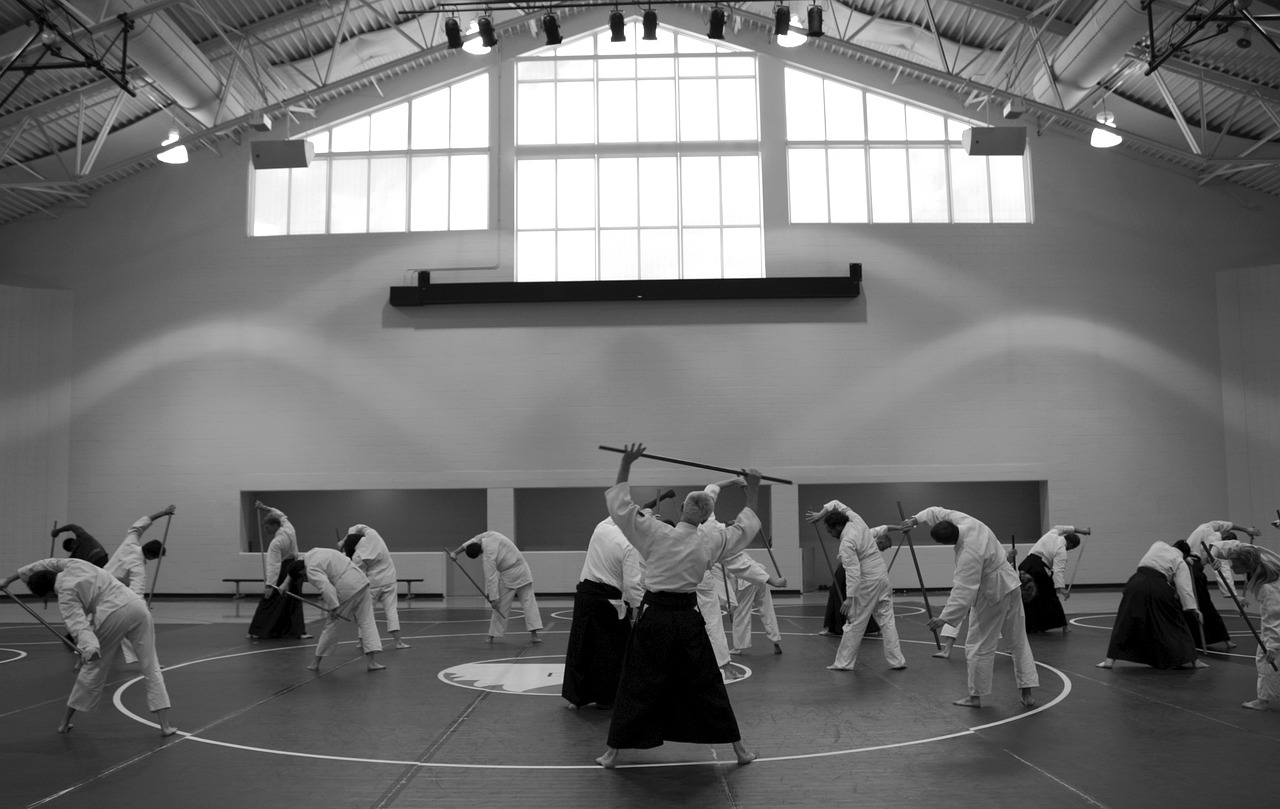
Stance and Movement
This article provides practical self-defense training tips that can enhance your confidence and personal safety. Learn essential techniques and mental strategies to empower yourself in various situations.
Before diving into techniques, it's crucial to grasp the fundamental principles of self-defense. This section covers the legal aspects, personal boundaries, and the importance of awareness in potentially dangerous situations.
Starting with basic self-defense moves is vital for building confidence. Here, we outline simple yet effective techniques that anyone can learn and practice to protect themselves in an emergency.
Your stance and movement are the foundation of self-defense. A solid stance not only provides you with balance but also prepares you to react quickly. Imagine you're a tree, rooted firmly in the ground, yet flexible enough to sway with the wind. When you're in a self-defense situation, you want to be that tree—stable but ready to move.
The first step in establishing a good stance is to position your feet shoulder-width apart. This creates a stable base, allowing you to shift your weight from one foot to another with ease. Bend your knees slightly to lower your center of gravity, which enhances your balance. Keep your hands up, with your elbows tucked in, ready to defend or strike. This is often referred to as the “guard” position.
In terms of movement, it's essential to stay light on your feet. Think of a boxer in the ring—always bouncing, always ready to dodge or engage. Practice moving in different directions while maintaining your stance. This agility can make all the difference in a confrontation. You can practice footwork drills, such as:
- Shuffling sideways
- Moving forward and backward
- Pivoting on your feet
Each of these movements will help you evade an attack and position yourself advantageously. Remember, the goal is to create distance between you and a potential threat. The more space you have, the more time you have to react.
Additionally, understanding body positioning is crucial. When you’re facing an opponent, angle your body slightly to the side rather than facing them head-on. This makes it harder for them to land a direct hit and allows you to move more easily in either direction. Keep your head up and your eyes focused on your opponent to anticipate their next move.
In conclusion, mastering your stance and movement is like laying the groundwork for a sturdy building. Without a solid foundation, everything else can crumble. So, invest time in practicing these techniques, and you'll not only boost your self-defense skills but also your confidence.
Situational awareness is key to preventing dangerous situations. This section emphasizes the importance of being aware of your surroundings and recognizing potential threats before they escalate.
Learning to identify red flags can help you avoid confrontations. This part discusses common warning signs to be aware of in various environments.
Your instincts can be your best defense. This section highlights the importance of listening to your gut feelings when assessing a situation.
Mental resilience is as important as physical skills in self-defense. This section explores techniques to boost your confidence and mental toughness in high-pressure situations.
Visualization techniques can enhance your self-defense preparedness. This part explains how to mentally rehearse scenarios to improve your confidence and response.
Managing stress is vital for effective self-defense. We discuss various strategies to help you stay calm and focused during confrontations.
Choosing the right self-defense training program can make a significant difference. This section provides guidance on what to look for in a program and how to find qualified instructors.
There are various types of self-defense classes available. This part outlines the differences between martial arts, Krav Maga, and other self-defense systems to help you choose the best fit.
Instructor credentials can impact the quality of your training. Here, we discuss how to assess the qualifications and experience of potential instructors to ensure effective learning.
Q1: How long does it take to learn self-defense?
A1: The time it takes to learn self-defense varies based on the individual's commitment and the complexity of the techniques. Generally, basic self-defense principles can be grasped in a few weeks with regular practice.
Q2: Can self-defense techniques be effective for women?
A2: Absolutely! Self-defense techniques are designed for anyone, regardless of gender. Many self-defense classes focus on empowering women to defend themselves effectively.
Q3: Do I need to be physically fit to learn self-defense?
A3: While being fit can help, self-defense techniques can be adapted for individuals of all fitness levels. The focus is on technique and strategy rather than brute strength.
Q4: Is self-defense training expensive?
A4: The cost of self-defense training can vary widely. Some community centers offer affordable classes, while specialized programs may charge more. It's essential to find a program that fits your budget.

Footwork Drills
When it comes to self-defense, your footwork can be the difference between evading an attack and being caught off guard. Think of your feet as your first line of defense; they help you position yourself effectively and create distance from a potential threat. Practicing footwork drills not only enhances your agility but also builds the muscle memory needed to react swiftly in high-pressure situations. So, let’s get into some practical drills that can elevate your footwork skills!
One effective drill to start with is the **lateral shuffle**. This drill helps you develop side-to-side movement, which is crucial for dodging attacks. To perform a lateral shuffle, stand with your feet shoulder-width apart, bend your knees slightly, and push off with your leading foot to move sideways. Remember to keep your hands up to protect your face. Practice this for about 30 seconds in each direction. You can gradually increase the speed as you become more comfortable.
Another great drill is the **forward and backward step**. This drill mimics the movement you'll often need during a confrontation. Start by taking a step forward with your dominant foot, then quickly follow with your back foot to maintain your stance. Reverse this by stepping back with your dominant foot and bringing your other foot to meet it. Repeat this drill for a minute, focusing on maintaining balance and keeping your stance solid.
For those looking to add a little flair to their training, try incorporating **cone drills**. Set up a few cones in a zigzag pattern and practice moving around them using a combination of shuffles and steps. This will not only improve your footwork but also your ability to change direction quickly, which is essential in a self-defense scenario. The unpredictability of an attacker can be matched by your ability to maneuver swiftly!
Lastly, don’t underestimate the power of **shadowboxing**. While it may seem like a simple exercise, shadowboxing allows you to combine footwork with striking. As you throw punches, focus on moving your feet in rhythm. This drill helps you visualize a real confrontation and allows you to practice your footwork in a dynamic way. Plus, it's a fantastic workout!
In summary, incorporating these footwork drills into your training routine can significantly enhance your self-defense skills. Remember, the goal is to create a strong foundation that will support your movements in a real-world scenario. As you practice, consider timing yourself or incorporating a partner to simulate more realistic conditions. With consistent effort, you’ll find that your confidence in your ability to evade and respond to threats will soar!
- How often should I practice footwork drills? Aim for at least 2-3 times a week to see significant improvement.
- Can I practice footwork drills at home? Absolutely! Many drills require minimal space and equipment.
- What should I wear while practicing? Comfortable athletic wear and supportive shoes are recommended.

Body Positioning
When it comes to self-defense, is crucial. Think of it as the foundation of a house; without a solid base, everything else can come crashing down. Your body positioning determines not only your ability to defend yourself effectively but also your capacity to escape from a potentially dangerous situation. It's all about maintaining a balanced posture that allows for quick movements while keeping you stable.
Imagine you're standing in a ready stance, knees slightly bent, feet shoulder-width apart. This stance gives you the flexibility to pivot or move in any direction. When in this position, your weight should be evenly distributed, allowing you to react swiftly to an attack. If you find yourself leaning too far forward or backward, you might lose your balance, making it easier for an assailant to take control.
Moreover, your body should always be angled slightly away from a potential threat. This positioning not only protects vital organs but also makes you a harder target. By turning your body sideways, you reduce the area an attacker can hit, while still keeping your eyes on them. This is a simple yet effective strategy that can make a significant difference in a confrontation.
Another key aspect of body positioning is your hand placement. Keeping your hands up and open can convey a sense of readiness and can also serve as a defensive mechanism. Your hands should be at chin level, ready to block or deflect any incoming strikes. This position allows you to protect your face while also preparing to strike if necessary.
In addition to these basic principles, practicing different body positions in various scenarios can enhance your effectiveness. For instance, you might want to train in various environments—like confined spaces or open areas—to understand how your body positioning can adapt to different situations. The more you practice, the more instinctive these movements will become, making you feel more confident and secure.
To summarize, proper body positioning encompasses:
- A balanced and stable stance
- An angled body to protect vital areas
- Hands up at chin level for defense
- Adaptability to different environments
Mastering body positioning is not just about physical stance; it’s about cultivating a mindset of readiness. When you feel secure in your body and stance, your confidence skyrockets, and you are far more prepared to handle any situation that comes your way.
Q: How can I practice body positioning at home?
A: You can practice in front of a mirror to check your stance and movements. Consider using shadowboxing techniques to simulate an attack and practice your responses.
Q: Is body positioning the same for all self-defense situations?
A: While the fundamental principles remain the same, the specifics may vary depending on the environment and the type of attack. Practicing in different scenarios can help you adapt.
Q: Can I learn body positioning without formal training?
A: Yes, many resources are available online, including videos and tutorials. However, formal training can provide personalized feedback and more effective techniques.

Basic Striking Techniques
When it comes to self-defense, having a few under your belt can make all the difference. The goal here isn't to become a martial arts master overnight, but rather to equip yourself with effective moves that can help you escape a potentially dangerous situation. Think of striking techniques as your safety net; they’re there to give you an edge, allowing you to create distance between you and an attacker. So, let’s dive into some fundamental strikes that anyone can learn!
First up, we have the jab. This quick and straightforward punch is perfect for creating space. The jab is not just about throwing a punch; it’s about keeping your opponent at bay. To execute it, simply extend your lead arm towards your target while keeping your other hand up to protect your face. It’s a great way to gauge distance while also setting up for more powerful strikes.
Next, let’s talk about the cross. This is a powerful punch thrown with your dominant hand, crossing over your body. It’s effective when combined with a jab, creating a one-two punch that can catch an opponent off guard. To perform a cross, pivot your back foot and rotate your hips, delivering the punch with your dominant hand while keeping your guard up. Remember, striking is as much about body mechanics as it is about brute force.
Another essential technique is the elbow strike. This is particularly useful in close-quarter situations where you may not have the space to throw a punch. The elbow strike is powerful and can be delivered from various angles. To perform this move, raise your arm and drive your elbow towards your target, using your body weight for added force. This technique can be a game-changer, especially if you find yourself in a tight spot.
Let’s not forget about the knee strike. This technique is particularly effective against an attacker who is close to you. By lifting your knee and driving it into your opponent’s midsection, you can create an opportunity to escape. It’s a simple yet effective move that can catch an assailant off guard, especially if they are not expecting a sudden upward strike.
Lastly, the front kick is another vital technique to master. This kick can help you maintain distance from an attacker. To execute a front kick, lift your knee, extend your leg, and strike with the ball of your foot. This move not only creates space but can also incapacitate an attacker momentarily, giving you time to flee.
To summarize, here’s a quick table of the basic striking techniques we discussed:
| Technique | Description | Use |
|---|---|---|
| Jab | A quick punch to create distance. | To keep an opponent at bay. |
| Cross | A powerful punch thrown with the dominant hand. | To follow up after a jab. |
| Elbow Strike | A close-range strike using the elbow. | Effective in tight situations. |
| Knee Strike | A strike using the knee to the midsection. | To create an escape opportunity. |
| Front Kick | A kick aimed at the opponent's torso. | To maintain distance and incapacitate. |
Learning these basic striking techniques can significantly improve your self-defense skills. They provide you with the confidence to handle unexpected situations. Remember, the key to mastering these techniques is practice. So, get out there and start training!
1. How long does it take to learn basic self-defense techniques?
Most people can learn basic techniques within a few weeks of consistent practice. However, mastery comes with time and experience.
2. Do I need a partner to practice these techniques?
While practicing with a partner can be beneficial, many techniques can be practiced solo using a punching bag or shadow boxing.
3. Is self-defense training suitable for everyone?
Absolutely! Self-defense training can benefit individuals of all ages and fitness levels. It’s about learning to protect yourself and building confidence.
4. What should I do if I can't remember all the techniques?
Don’t worry! Focus on a few key techniques that resonate with you. As you practice, they will become second nature.

Developing Situational Awareness
When it comes to self-defense, situational awareness is your first line of defense. It’s like having a sixth sense that helps you navigate through life with a keen eye for potential dangers. Imagine walking through a crowded park, and instead of being lost in your thoughts or glued to your phone, you’re actively scanning your surroundings. This ability to perceive and interpret your environment can make all the difference in avoiding dangerous situations before they escalate.
Situational awareness is all about being present and alert. It’s not just about seeing what’s in front of you; it’s about understanding the dynamics of your environment. For instance, if you notice a group of people acting suspiciously or a person who seems to be following you, your awareness kicks in, allowing you to make informed decisions. This proactive approach can help you stay one step ahead and potentially avoid confrontation.
One key aspect of developing situational awareness is learning to recognize red flags. These are warning signs that something might be off. For example, if you’re in a public space and someone is invading your personal space or behaving erratically, these are clear indicators that you should be on high alert. Some common red flags to watch for include:
- Unusual behavior from individuals in your vicinity
- People loitering in areas where they shouldn’t be
- Groups of individuals who seem to be targeting someone
By training yourself to notice these signs, you can significantly reduce your risk of becoming a victim. Remember, it’s not about living in fear; it’s about being smart and prepared. Trusting your instincts also plays a crucial role in situational awareness. If something feels off, it probably is. Your gut feelings are often your best ally in assessing a situation. Don’t ignore that inner voice; it’s there to protect you.
Alongside recognizing red flags and trusting your instincts, it’s essential to practice situational awareness techniques. Here are a few methods you can incorporate into your daily life:
- Practice mindfulness: Engage in exercises that enhance your focus and attention, such as meditation or breathing techniques.
- Observe your surroundings: Make it a habit to take mental notes of exits, potential hazards, and the people around you when you enter a new environment.
- Engage with your environment: Ask yourself questions about what you see. Who’s around you? What are they doing? Are there any potential threats?
By cultivating these habits, you’ll not only boost your situational awareness but also your confidence in handling unexpected situations. The more you practice being aware, the more instinctual it will become. Think of it as building a muscle; the more you work on it, the stronger it gets.
In conclusion, developing situational awareness is a vital skill that enhances your ability to protect yourself. It’s about being proactive rather than reactive, allowing you to navigate through life with a sense of security. So, the next time you step out, remember to keep your head up, eyes open, and instincts sharp. You never know when that heightened awareness might just save you from a potentially dangerous situation.
Q: What is situational awareness?
A: Situational awareness is the ability to identify, process, and comprehend information about your environment to make informed decisions, especially in potentially dangerous situations.
Q: How can I improve my situational awareness?
A: You can improve your situational awareness by practicing mindfulness, observing your surroundings, and engaging with your environment through questions and mental notes.
Q: Why is trusting my instincts important?
A: Trusting your instincts is crucial because your gut feelings often alert you to dangers that may not be immediately obvious, helping you take preventive action.
Q: Can situational awareness be learned?
A: Yes, situational awareness can be developed through practice and training. Engaging in regular exercises to enhance your focus and observation skills can significantly improve your awareness.
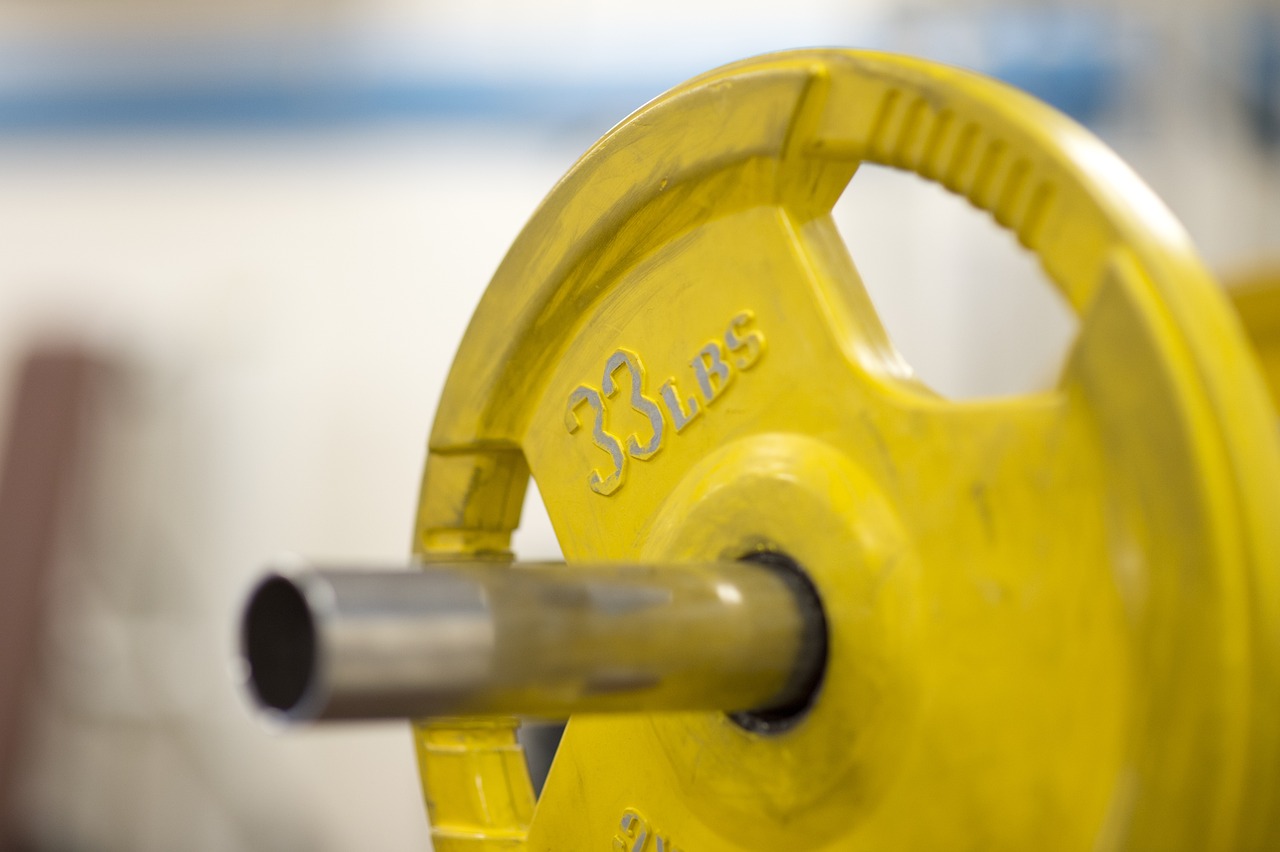
Recognizing Red Flags
In the world of self-defense, being proactive is your best ally. One of the key elements to staying safe is —those subtle signs that something might be off. Imagine you’re walking down the street, and you see someone lingering too long in a corner, or a person who keeps glancing your way with a tense posture. These are not just coincidences; they can be indicators of potential danger. By honing your ability to spot these signs, you can take action before a situation escalates.
Red flags can manifest in various forms, and it's essential to be aware of your surroundings. For instance, if you notice someone who seems overly interested in your movements or is following you without a clear purpose, it's time to trust your instincts. It’s like being a detective in your own life—always on the lookout for clues that might suggest trouble is brewing. Here are a few common red flags to keep in mind:
- Unusual Behavior: Watch for individuals acting erratically or aggressively. This could range from shouting to pacing back and forth.
- Excessive Eye Contact: While eye contact is normal, someone who stares too intensely might be trying to intimidate or gauge your reaction.
- Proximity: If someone is invading your personal space without reason, it’s a sign to be cautious.
- Group Dynamics: A group of people who seem to be fixated on you can be a significant red flag. Always assess the situation before engaging.
Recognizing these signs is only the first step; the next is knowing how to respond. If you feel uncomfortable, consider changing your path, seeking out a crowded area, or contacting someone for help. Think of it as playing a game of chess: the sooner you can identify threats, the better your chances of making a strategic move to protect yourself.
Moreover, it’s not just about spotting the danger; it’s also about understanding the environment around you. Familiarize yourself with the places you frequent—know the exits, the well-lit areas, and the potential hiding spots. This awareness can turn a precarious situation into an opportunity for escape. Just like a seasoned traveler knows the ins and outs of a new city, you should know your surroundings like the back of your hand.
Lastly, remember that trusting your gut is crucial. If something feels off, don’t dismiss that feeling. It’s your intuition working to keep you safe. In a world where unpredictability lurks around every corner, being able to recognize red flags not only empowers you but also enhances your overall confidence in your self-defense skills. So, keep your eyes peeled, and stay alert—your safety might just depend on it.
Q: What are some common red flags to look out for?
A: Common red flags include unusual behavior, excessive eye contact, invading personal space, and groups of people fixating on you.
Q: How should I respond if I notice red flags?
A: If you feel uncomfortable, change your path, seek out a crowded area, or contact someone for help. Always trust your instincts.
Q: Can I improve my ability to recognize red flags?
A: Yes! Practice situational awareness by regularly assessing your environment and watching for behaviors that seem out of place.
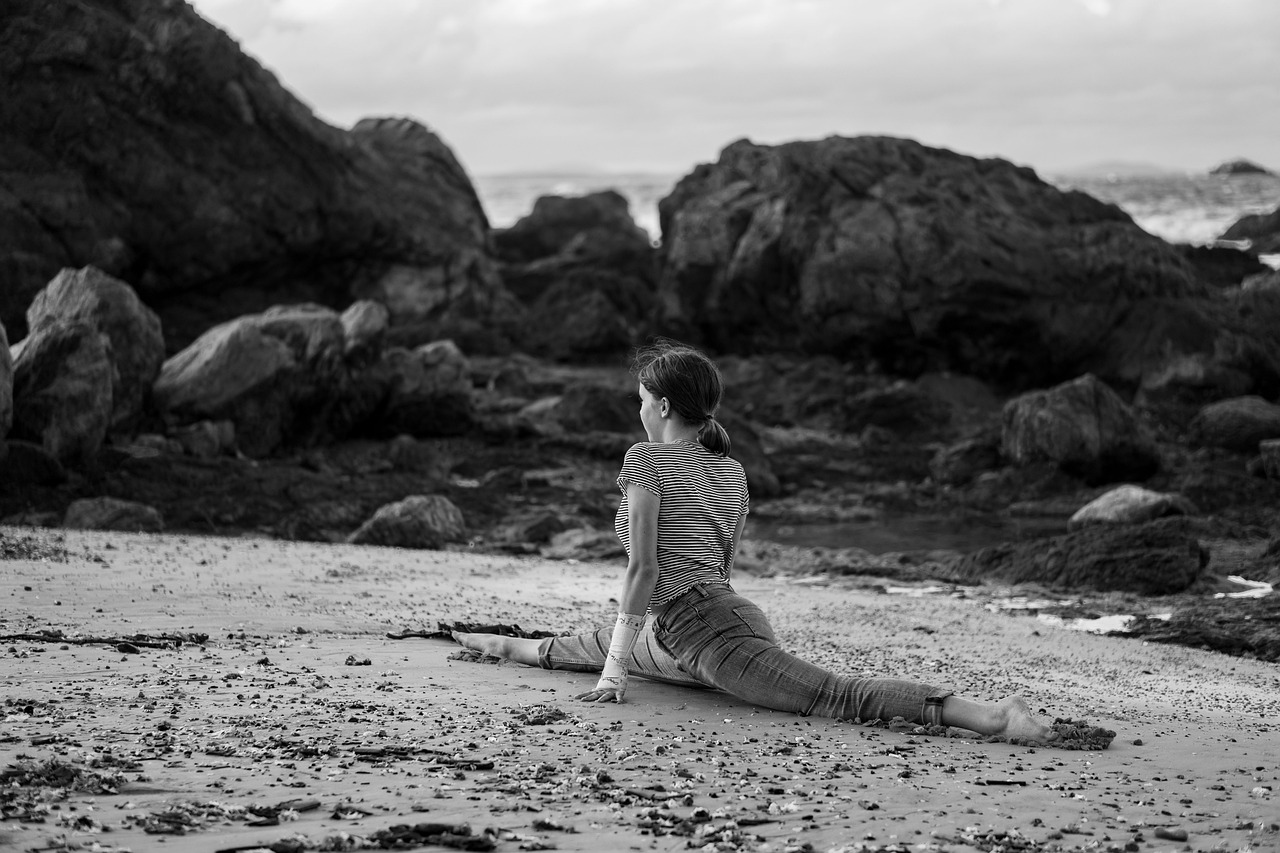
Trusting Your Instincts
When it comes to self-defense, one of the most powerful tools at your disposal is your intuition. Have you ever felt a chill run down your spine when something didn’t feel right? That’s your instincts kicking in, and they can be your best ally in potentially dangerous situations. Trusting your instincts means being attuned to your surroundings and recognizing when something feels off. It's like having an internal alarm system that alerts you to danger before your rational mind can even process it.
So, how do you become more in tune with your instincts? First, practice being present. This means actively engaging with your environment rather than zoning out on your phone or daydreaming. When you’re aware, you’re more likely to notice subtle cues that might indicate a threat. For instance, if you see someone behaving strangely or if a person is lingering in a place where they shouldn’t be, your gut might tell you to take a different route or avoid that area altogether.
Another key aspect of trusting your instincts is recognizing the difference between a false alarm and a genuine threat. Sometimes, our minds can play tricks on us, leading us to feel anxious without a valid reason. This is where experience comes into play. The more you expose yourself to different environments and situations, the better you’ll become at distinguishing between harmless scenarios and those that warrant caution. Remember, it’s perfectly okay to err on the side of caution; it’s better to be safe than sorry!
Additionally, consider the following tips to help strengthen your instinctual responses:
- Practice mindfulness: Engaging in mindfulness exercises can help you become more aware of your thoughts and feelings, making it easier to recognize when something feels off.
- Reflect on past experiences: Think back to times when your instincts were spot on. What were the signs? How did you feel? Learning from these experiences can help you trust your gut in the future.
- Engage in self-defense training: The more you learn about self-defense, the more confident you’ll become in your ability to handle various situations. This confidence can amplify your instinctual responses.
In conclusion, trusting your instincts is not just about feeling something; it’s about acting on that feeling. Whether it’s choosing to walk a different way home or deciding to leave a gathering that feels uncomfortable, your instincts are there to guide you. Remember, in the world of self-defense, your intuition can be the difference between safety and danger. So, the next time you feel that gut feeling, don’t ignore it—listen, trust it, and take action.
Q: How can I improve my instincts for self-defense?
A: You can improve your instincts by practicing mindfulness, reflecting on past experiences, and engaging in self-defense training to enhance your awareness and confidence.
Q: What should I do if my instincts tell me something is wrong?
A: If your instincts signal danger, trust them! Take precautionary measures, such as leaving the area, seeking help, or alerting someone nearby.
Q: Are instincts always reliable?
A: While instincts can be incredibly helpful, it's important to balance them with rational thinking. Experience and awareness can help you better discern when to trust your gut.

Building Mental Resilience
Mental resilience is not just a buzzword; it’s a critical aspect of self-defense that’s often overlooked. Think of it as the armor for your mind, helping you to stay calm and collected in the face of danger. Just like a soldier prepares for battle, you too can equip yourself with mental tools that enhance your confidence and ability to respond effectively under pressure. But how do you build this mental fortitude?
First and foremost, visualization techniques play a pivotal role in preparing your mind for real-life scenarios. Imagine yourself in various situations where you might need to defend yourself. Picture the environment, the potential threats, and your own reactions. This mental rehearsal can make a world of difference. It’s like practicing a sport; the more you visualize, the better you become at executing your moves when it counts. For instance, if you visualize facing an aggressor, you can mentally walk through your response, boosting your confidence when facing a similar situation in reality.
Moreover, managing stress is vital for effective self-defense. When you find yourself in a confrontational situation, your body goes into fight-or-flight mode. This physiological response can cloud your judgment and impair your ability to react swiftly. To combat this, consider incorporating stress management strategies into your daily routine. Techniques such as deep breathing, mindfulness meditation, or even simple physical exercise can help keep your mind clear and focused. When you train your mind to handle stress, you’re not just preparing for a fight; you’re also enhancing your overall quality of life.
Another essential component of building mental resilience is the power of positive affirmations. Repeating empowering phrases can help rewire your brain to think more positively about your abilities. For example, telling yourself, “I am strong and capable of defending myself” can create a mental shift that boosts your self-esteem. This practice is akin to tuning a musical instrument; the more you adjust your mindset, the more harmonious your responses will be in challenging situations.
Lastly, remember that building mental resilience is a journey, not a destination. It requires consistent effort and practice. Surround yourself with supportive individuals who encourage your growth. Engage in discussions about self-defense and share experiences with others. This communal approach not only reinforces your learning but also fosters a sense of belonging and support. In essence, the more you invest in your mental resilience, the more empowered you will feel, not just in self-defense, but in every aspect of life.
- What is mental resilience? Mental resilience refers to the ability to adapt and recover from difficult situations, maintaining a positive mindset and effective decision-making under pressure.
- How can visualization techniques help in self-defense? Visualization helps prepare your mind for real-life scenarios by mentally rehearsing responses, which can enhance your confidence and effectiveness during actual confrontations.
- What are some effective stress management strategies? Techniques such as deep breathing, mindfulness meditation, and regular physical exercise can help manage stress and improve focus during high-pressure situations.
- Why are positive affirmations important? Positive affirmations help rewire your brain to foster a positive self-image and boost your confidence, which is crucial in self-defense situations.
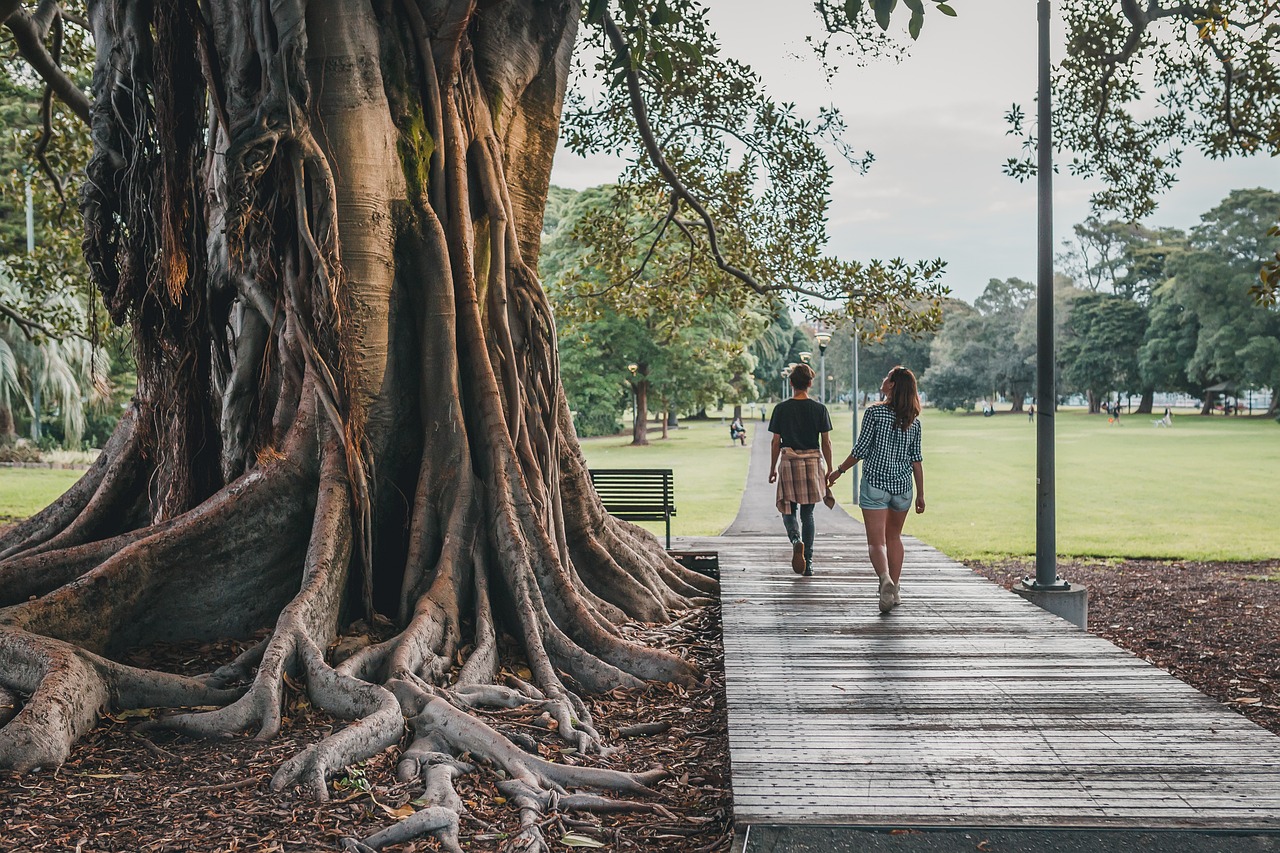
Visualization Techniques
Visualization techniques play a pivotal role in enhancing your self-defense preparedness. Imagine standing in front of a mirror, rehearsing not just the moves but the entire scenario in your mind. This mental rehearsal can significantly boost your confidence and improve your reaction time in real-life situations. When you visualize, you’re essentially programming your brain to respond effectively under pressure. It's like creating a mental movie where you are the hero, successfully navigating through a potentially dangerous encounter.
One effective way to practice visualization is to find a quiet space where you can relax and focus. Close your eyes and take a few deep breaths, allowing yourself to clear your mind. Start picturing a situation where you might need to defend yourself. Visualize every detail: the location, the people around you, and the potential threats. See yourself responding confidently, executing the techniques you’ve learned. This practice not only prepares you physically but also mentally, making you more resilient when faced with real-life challenges.
It's essential to incorporate various scenarios into your visualization practice. For instance, you might visualize:
- Walking alone at night and noticing someone following you.
- Being approached by a stranger asking for directions.
- Experiencing an unexpected confrontation in a crowded place.
By envisioning multiple situations, you train your mind to remain calm and collected, no matter the challenge. This mental exercise can be as powerful as physical training. Just like an athlete visualizes their performance before a big game, you too can prepare yourself for the unexpected. Remember, the more vividly you can imagine these scenarios, the more prepared you will feel in real life.
In addition to scenario visualization, consider practicing positive affirmations alongside your mental rehearsals. Phrases such as “I am strong,” “I am aware,” and “I can handle this” can reinforce your self-belief. These affirmations, when combined with visualization, create a powerful mindset that empowers you to face any situation with confidence.
Ultimately, visualization techniques are about creating a mental toolkit that you can draw upon when needed. Just as a painter visualizes their masterpiece before putting brush to canvas, you can visualize your success in self-defense. This practice not only prepares you physically but also instills a profound sense of confidence and resilience. So, take the time to visualize, and watch how it transforms your approach to self-defense and personal safety.
Q: How often should I practice visualization techniques?
A: It's beneficial to practice visualization techniques regularly, ideally a few times a week. Consistency helps reinforce your mental preparedness.
Q: Can visualization really improve my self-defense skills?
A: Yes! Visualization enhances your mental readiness and can improve your reaction times during real-life confrontations. It helps you feel more confident and prepared.
Q: What if I struggle to visualize scenarios?
A: If you find it challenging to visualize, try starting with simpler scenarios or even watching videos of self-defense techniques. This can help you create a mental image more easily.
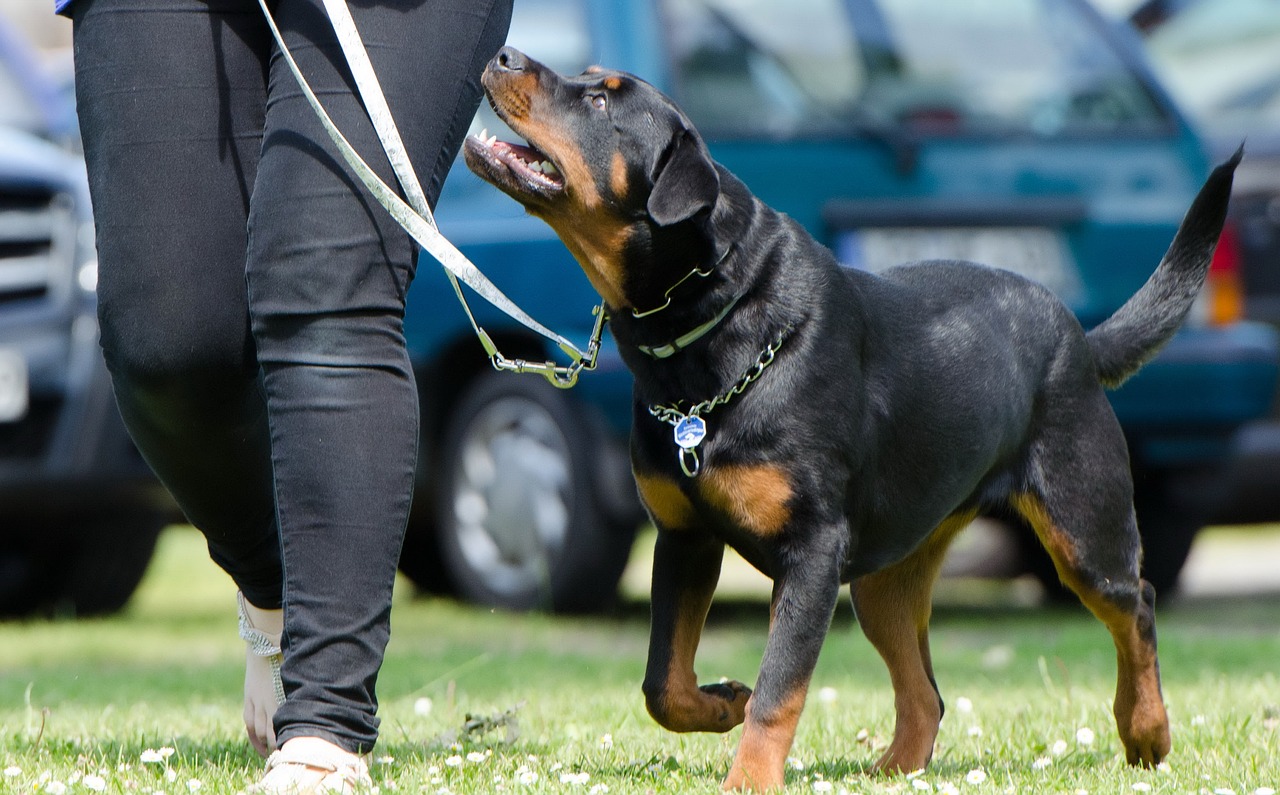
Stress Management Strategies
Managing stress is crucial when it comes to self-defense. Imagine being in a high-pressure situation where your heart races, and your mind is clouded with panic. It's easy to feel overwhelmed, but with the right stress management strategies, you can regain control and respond effectively. One effective approach is to incorporate breathing exercises into your routine. Deep, controlled breaths can help calm your nerves and clear your mind, allowing you to think more clearly and react more decisively.
Another strategy is to practice mindfulness. This involves being fully present in the moment, which can help you stay grounded during stressful situations. By focusing on your surroundings and your own feelings, you can reduce anxiety and maintain a sense of control. You might find it helpful to set aside a few minutes each day to practice mindfulness techniques, such as meditation or simply observing your environment without judgment.
Physical activity is also a fantastic way to manage stress. Engaging in regular exercise not only boosts your physical health but also releases endorphins, which are known as the body's natural stress relievers. Whether it's a brisk walk, a jog, or a self-defense class, staying active can help you release pent-up tension and improve your overall mood.
Additionally, having a solid support system can be invaluable. Surrounding yourself with friends and family who understand your journey can provide the emotional boost you need. Don't hesitate to share your experiences and feelings with them; sometimes, just talking about what you're going through can lighten the load. Remember, it's okay to lean on others for support.
Finally, consider incorporating visualization techniques into your stress management toolkit. Imagine yourself successfully navigating a challenging situation, feeling calm and confident. This mental rehearsal can prepare you for real-life encounters, making them feel less daunting. By visualizing success, you not only build confidence but also train your brain to respond positively under pressure.
- What are some quick stress relief techniques I can use in a moment of panic?
Some quick techniques include deep breathing, counting to ten, or focusing on a specific object in your environment to ground yourself. - How often should I practice stress management techniques?
It's beneficial to practice daily, even when you're not feeling stressed. This way, you'll be better prepared when challenges arise. - Can physical exercise really help with stress management?
Absolutely! Regular physical activity releases endorphins and helps reduce stress levels, making it a key component of effective stress management.

Finding the Right Training Program
Choosing the right self-defense training program can significantly influence your journey towards empowerment and safety. With so many options available, it can feel overwhelming, like trying to find a needle in a haystack. But fear not! By focusing on a few key aspects, you can find a program that suits your needs and helps you build the confidence you crave. First and foremost, consider the type of self-defense you are interested in. Different programs focus on various techniques and philosophies, so it’s essential to select one that resonates with you.
For instance, if you’re looking for a practical approach that emphasizes real-world scenarios, you might want to explore Krav Maga. On the other hand, if you prefer a more traditional martial arts experience, classes in karate or taekwondo might be more appealing. To help you navigate your options, here’s a brief overview of some popular self-defense systems:
| Self-Defense System | Focus | Best For |
|---|---|---|
| Krav Maga | Real-world scenarios, quick defenses | Individuals seeking practical self-defense |
| Karate | Striking techniques, discipline | Those interested in traditional martial arts |
| Brazilian Jiu-Jitsu | Ground fighting, submissions | People wanting to learn grappling techniques |
| Self-Defense Classes | Basic techniques for everyday situations | Beginners looking for a comprehensive overview |
Once you have a clear idea of the type of program you want, the next step is to assess the qualifications of the instructors. A great instructor can make all the difference in your learning experience. Look for instructors with a solid background in self-defense, including certifications and teaching experience. You might also want to check if they have experience in real-life situations, as this can provide invaluable insights into effective techniques.
Another essential factor to consider is the class environment. A supportive and encouraging atmosphere will make your learning experience much more enjoyable. Don’t hesitate to attend a few trial classes to get a feel for the instructor's teaching style and the dynamics of the class. It’s like trying on a pair of shoes—if they don’t fit well, keep looking!
Finally, consider the location and schedule of the training sessions. Finding a program that fits into your routine can make it easier to stay committed and progress in your training. Look for classes that are conveniently located and offered at times that work for you.
In summary, finding the right self-defense training program involves understanding what you want, evaluating instructor credentials, assessing the class environment, and considering logistics. With a bit of research and exploration, you can discover a program that not only enhances your self-defense skills but also boosts your confidence and personal safety.
- What should I wear to a self-defense class? Comfortable athletic wear and supportive shoes are recommended.
- How long does it take to learn self-defense? It varies by individual, but consistent practice over several weeks can lead to noticeable improvements.
- Is self-defense training suitable for everyone? Yes! Self-defense training can benefit people of all ages and fitness levels.
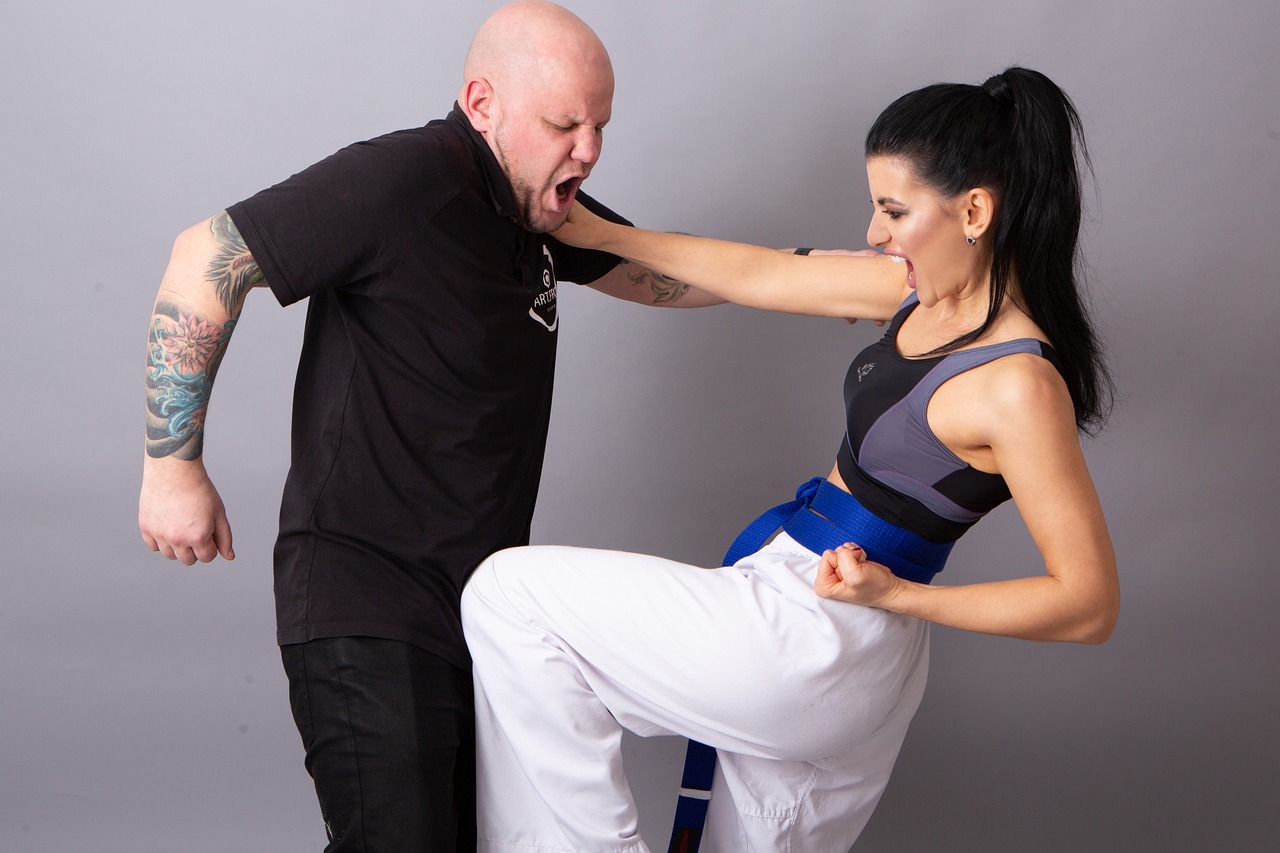
Types of Self-Defense Classes
When it comes to self-defense training, the variety of options available can be overwhelming. Each type of class offers unique techniques and philosophies, catering to different needs and preferences. Understanding the various types of self-defense classes can help you make an informed decision about which one is right for you. Here are some of the most common types:
- Martial Arts: This category includes traditional disciplines like Karate, Judo, and Taekwondo. These classes often focus on discipline, respect, and the development of physical skills. They teach not only self-defense techniques but also promote mental and physical fitness.
- Krav Maga: Developed for the Israeli military, Krav Maga is a practical and efficient self-defense system that emphasizes real-world scenarios. It teaches students how to defend against various attacks, including armed assailants, and focuses on quick, effective responses.
- Brazilian Jiu-Jitsu (BJJ): BJJ is a grappling-based martial art that emphasizes ground fighting and submission techniques. It is particularly useful for self-defense situations where the confrontation goes to the ground, teaching individuals how to control and neutralize an opponent.
- Self-Defense Workshops: These are often short-term classes designed to teach specific techniques and strategies quickly. They may cover a range of topics, from situational awareness to basic striking techniques, making them accessible for people with varying levels of experience.
- Women’s Self-Defense Classes: Tailored specifically for women, these classes focus on techniques and strategies that empower women to defend themselves against common threats. They often incorporate discussions about personal safety and awareness, making them both practical and informative.
Choosing the right class depends on your personal goals, fitness level, and comfort with physical confrontation. If you're looking for a comprehensive approach to self-defense, a martial arts class might be ideal. On the other hand, if you want something more focused on practical techniques, Krav Maga could be your best bet. Remember, the key is to find a class that resonates with you and makes you feel confident in your ability to protect yourself.
In addition to the type of class, consider the atmosphere and teaching style of the instructor. A supportive and encouraging environment can significantly enhance your learning experience. Whether you are a beginner or looking to refine your skills, the right self-defense class can be a game-changer in boosting your confidence and personal safety.
Here are some common questions people have when considering self-defense classes:
- How long does it take to learn self-defense? The time it takes to learn self-defense varies based on the class and your commitment. Many people start feeling more confident within a few weeks of consistent training.
- Do I need to be in shape to start self-defense classes? No, self-defense classes are designed for all fitness levels. Most instructors will accommodate beginners and help you progress at your own pace.
- What should I wear to a self-defense class? Comfortable clothing that allows for movement is best. Many classes may require you to wear specific gear, so it’s wise to check in advance.
- Are self-defense classes safe? Yes, self-defense classes prioritize safety. Instructors typically emphasize controlled training environments and proper techniques to minimize the risk of injury.
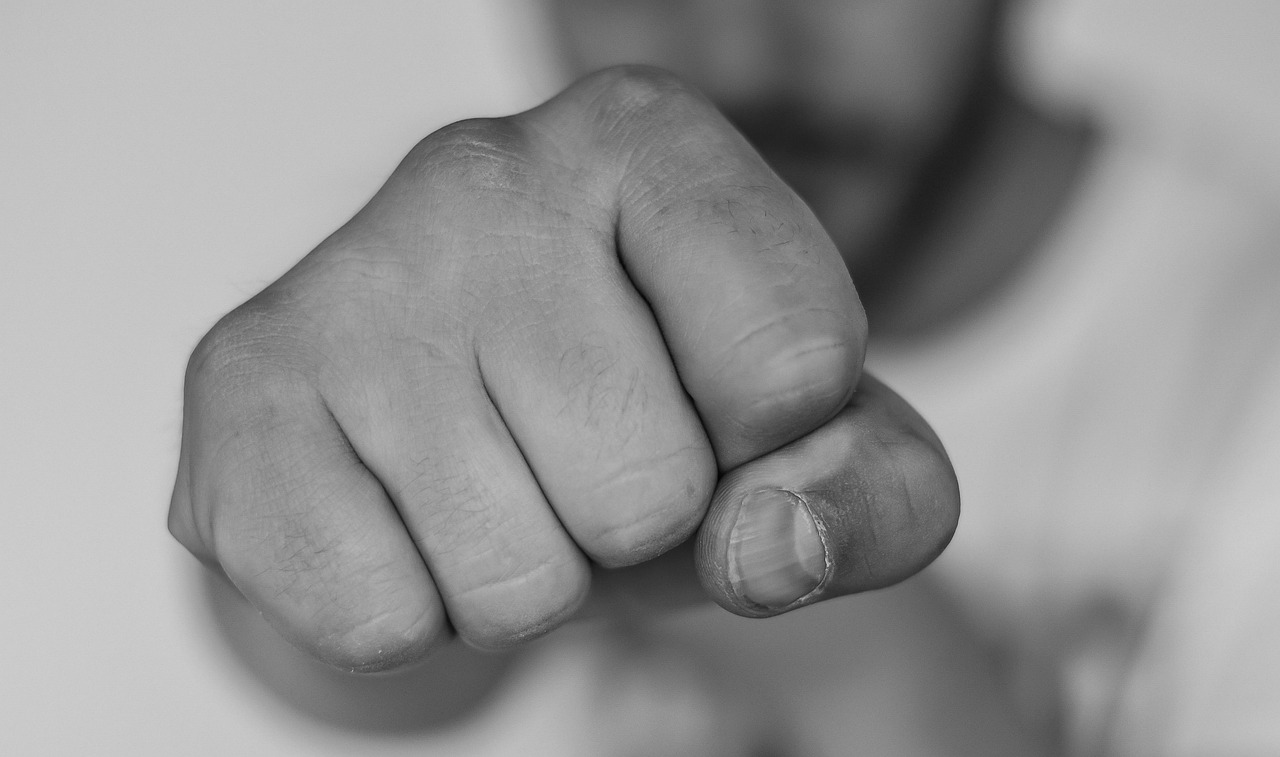
Assessing Instructor Credentials
When it comes to self-defense training, the instructor's credentials are paramount. After all, you want to learn from someone who not only knows their stuff but also has the experience to teach it effectively. So, what should you look for when assessing an instructor's qualifications? First and foremost, you should consider their certifications. Many self-defense programs require instructors to undergo rigorous training and obtain certifications from recognized organizations. This ensures that they have a solid understanding of the techniques they are teaching and the principles behind them.
Next, experience matters. An instructor who has been teaching for several years is likely to have honed their skills and developed effective teaching methods. Ask about their background: How long have they been practicing self-defense? Have they competed in any tournaments or real-life situations? This can provide insight into their practical knowledge and ability to handle various scenarios.
Additionally, it’s essential to evaluate their teaching style. A good instructor should be able to adapt their methods to suit different learning styles. During a trial class, pay attention to how they interact with students. Are they patient and encouraging? Do they provide constructive feedback? These qualities are crucial for creating a positive learning environment.
Moreover, consider the class size. Smaller classes often allow for more personalized attention, which can enhance your learning experience. In contrast, larger classes may mean less individual feedback, potentially hindering your progress. It’s also wise to check the instructor's reputation. Look for online reviews or ask current students about their experiences. Positive testimonials can be a good indicator of an instructor’s effectiveness.
Lastly, don’t hesitate to ask questions. Inquire about their approach to safety, how they handle different types of students, and their philosophy on self-defense. A knowledgeable instructor will be eager to share their insights and address any concerns you might have. Remember, the right instructor can make all the difference in your self-defense training journey. So take your time, do your research, and choose wisely!
- What qualifications should a self-defense instructor have? Look for certifications from recognized organizations, years of teaching experience, and a solid understanding of self-defense principles.
- How can I find a good self-defense class? Research online, read reviews, and ask for recommendations from friends or family who have taken classes.
- What should I expect in a trial self-defense class? You should expect to learn basic techniques, receive feedback, and evaluate the instructor's teaching style.
- Is it important for the instructor to have real-life experience? Yes, real-life experience can provide valuable insights and practical knowledge that is beneficial for students.
Frequently Asked Questions
- What is self-defense?
Self-defense refers to the actions taken to protect oneself from physical harm. It encompasses a range of techniques and strategies designed to help individuals evade or respond to an attack, ensuring personal safety in potentially dangerous situations.
- Do I need prior experience to begin self-defense training?
No prior experience is necessary to start self-defense training. Many programs cater to beginners, focusing on fundamental techniques and building confidence. Everyone can learn the basics, regardless of their fitness level or martial arts background.
- How can I improve my situational awareness?
Improving situational awareness involves being mindful of your surroundings and recognizing potential threats. Practice observing your environment regularly, stay alert to unusual behavior, and trust your instincts to enhance your ability to detect danger early.
- What are some basic self-defense techniques I can learn?
Some basic self-defense techniques include maintaining a proper stance, using effective footwork, and executing simple strikes like palm strikes or knee kicks. These techniques are designed to help you create space and escape from an attacker.
- How important is mental resilience in self-defense?
Mental resilience is crucial for effective self-defense. It helps you remain calm under pressure, make quick decisions, and execute techniques effectively. Building mental toughness through visualization and stress management strategies can greatly enhance your self-defense capabilities.
- What should I look for in a self-defense training program?
When selecting a self-defense training program, consider the instructor's credentials, the curriculum offered, and the training environment. Look for programs that emphasize practical techniques, situational awareness, and personal safety, ensuring a comprehensive learning experience.
- Are there different types of self-defense classes available?
Yes, there are various types of self-defense classes, including martial arts, Krav Maga, and personal safety workshops. Each type focuses on different techniques and philosophies, so it's essential to choose one that aligns with your personal goals and comfort level.
- How can I assess the qualifications of a self-defense instructor?
To assess an instructor's qualifications, check their training background, certifications, and teaching experience. You can also read reviews from previous students and observe a class if possible to gauge their teaching style and effectiveness.



















